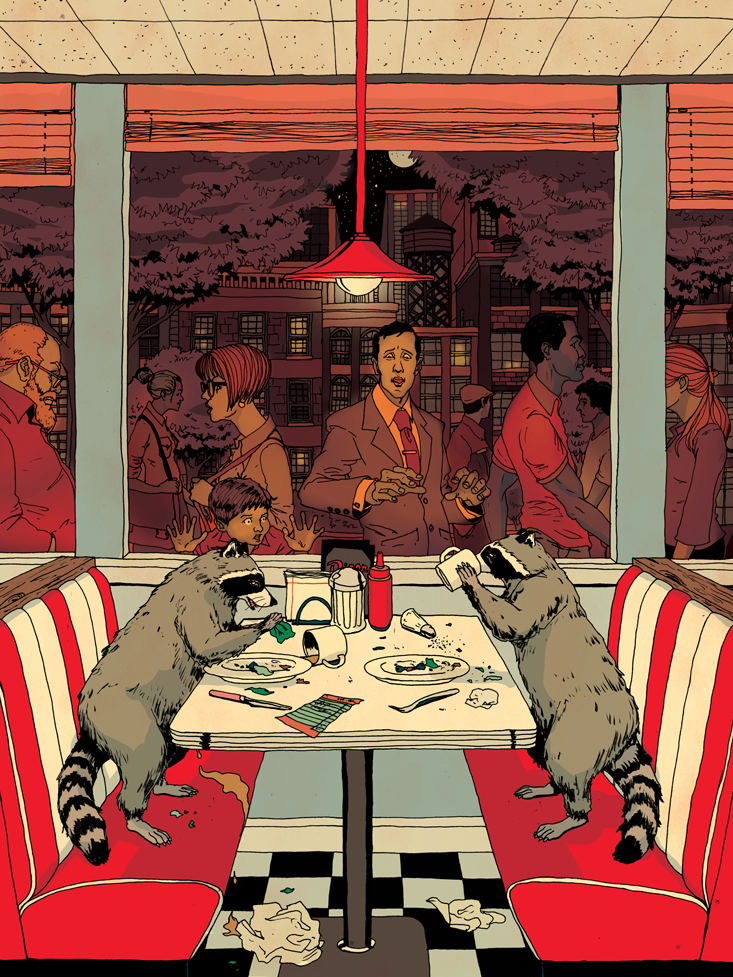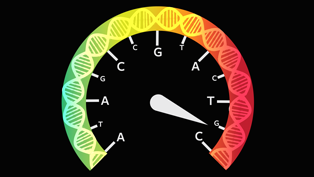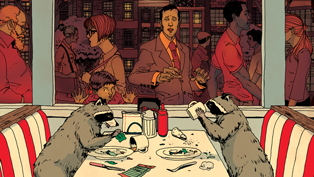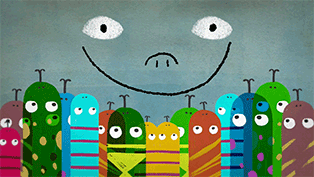The Intelligent Life of the City Raccoon
Adapting to the urban jungle has made Rocky smarter.
Toronto resident Simon Treadwell wheeled a garbage bin onto a snow-bound lot next to his property one evening this past winter. Inside the bin was a smelly mixture of wet and dry cat food, sardines, and fried chicken. Treadwell sprinkled some of the mix on and around the bin, made sure his three motion-activated night vision cameras were on, and went back into his house.
Treadwell was testing a new lid latch he had devised in response to the city of Toronto’s request for proposals: The city needed help keeping raccoons out of people’s garbage. For over a decade, residents had been asked to place organic compostable materials such as vegetables, meat, bones, and even paper towels into green bins. But raccoons had learned to overturn the bins, causing the latches to give way when they hit the ground. And if the latches didn’t pop open, raccoons often fiddled with them until they did. The city wanted to upgrade its garbage bins so that they could resist raccoons, but still open easily when picked up by a garbage truck’s automated arm. Designs continue to be evaluated.
“We’ve devised all sorts of ways of protecting our garbage, which all fail,” says Michael Pettit, an associate professor of psychology at York University, who has studied the history of animal behavior, including that of raccoons. The success of the city’s aggressive raccoons have struck fear into the hearts of Torontonians. Even Toronto Mayor Rob Ford confessed to the media that his family was too frightened to take out their trash. “Everyone I know has had to evict a raccoon from their house,” says Pettit. “Everybody has a raccoon story.”
 EASY PEASY: A Toronto raccoon makes short work of the city’s composting and garbage bins. The early 20th-century researchers Lawrence W. Cole and Herbert Burnham Davis described raccoons’ cognitive abilities as closer to monkeys than to cats and dogs.
EASY PEASY: A Toronto raccoon makes short work of the city’s composting and garbage bins. The early 20th-century researchers Lawrence W. Cole and Herbert Burnham Davis described raccoons’ cognitive abilities as closer to monkeys than to cats and dogs. Unlike many animals, raccoons “flourished rather than receded in the face of human expansion,” Pettit points out in an article for the American Psychological Association.1 Part of the reason for their success may be that the urban environment has contributed to their intelligence. In humans, the effect is well known. Educational psychologist Walkiria Fontes has compared the cognitive abilities of rural and urban children on two metrics: crystallized intelligence, which is associated with experience, and fluid intelligence, which is the ability to think logically and solve problems in novel situations, independent of acquired knowledge. She found that urban rich kids have the edge with both kinds of intelligence. But even poor urban students scored better than poor rural students in fluid intelligence.
City raccoons also appear smarter than their rural counterparts. Suzanne MacDonald, a comparative psychologist who studies raccoon behavior at York University in Toronto, has compared the problem-solving skills of rural and city raccoons. The result? Urbanites trump their country cousins in both intelligence and ability. For the past few summers, she videotaped rural and urban racoons toying with containers baited with cat food. While both rural and city racoons readily approached familiar containers, they dealt differently with unfamiliar ones. Where rural raccoons took a long time to approach novel containers, city raccoons would attack them the moment she turned her back.
One particularly persistent urban raccoon even learned to open doors leading into MacDonald’s garage, where she keeps her garbage bins. It stood up on an overturned flowerpot, and kept pulling and pushing on the round knob of the door handle with its five-digit paws until it turned. “Normally, they can’t do that, they can’t grasp and turn things very easily,” MacDonald says. “Raccoons in the city are extraordinary, not only in their ability to approach things, but they have no fear, and they stick with it, they will spend hours trying to get food out of something.”
THE CITY STRIKES BACK: Simon Treadwell’s raccoon-resistant garbage bins stood up to five nights of effort (this video is composed of multiple clips spanning several nights). Simon TreadwellTreadwell also noted how quickly his subjects learned. “They do go around trying systematically different things around that bin, they play until something moves and then they keep working at that,” Treadwell says.
The city itself may be partly to blame. “Cities are machines for learning. They offer a maelstrom of activities,” says Harvard economist Edward Glaeser, author of Triumph of the City. “I’m sure it must be for animals as well, a range of possibilities to learn from and learn about.” Cities might have proved particularly beneficial to raccoons because of their innate boldness. MacDonald says bold and curious animals like racoons make good learners. The connection between boldness and learning has also been observed in other animals. Lynne Sneddon of the University of Liverpool, for example, found that bold rainbow trout learn better and more quickly than shy ones.

As cities invent more complex latches and levers, they may actually be training raccoons to open them—and increasing their overall intelligence. Bill Dickens, an economist at Northeastern University, studies the g factor, a measure of general intelligence. “If they’re in a greatly enriched and cognitively demanding environment and if there are a bunch of traits that are more demanded by a city environment,” Dickens says, “they could all be enhanced together.”
But with some luck, Treadwell’s invention may turn raccoons’ learning skills against them. His latch system requires an opposable thumb, something raccoons don’t have. They might just take the hint and give up. Treadwell’s tapes show the raccoons struggling to open his bins for an epic five nights (see The City Strikes Back) before they finally started to lose interest, Treadwell says. By the end of the fifth night, they turned their attention to the bait on and around the bin—and left. “It looked like they learned it was a waste of time and moved on,” Treadwell says. “But to draw this conclusion you’d have to do a larger test.”
The city of Toronto is currently testing and evaluating bin designs and will start rolling the winner out across the city next fall, says Robert Orpin, director of the city’s Solid Waste Collections. Raccoons beware: at least 500,000 of them will be manufactured.

 ENVIRONMENT Junk Food Is Bad For Plants, Too
ENVIRONMENT Junk Food Is Bad For Plants, Too GENETICS Does Stress Speed Up Evolution?
GENETICS Does Stress Speed Up Evolution? ANIMALS The Intelligent Life of the City Raccoon
ANIMALS The Intelligent Life of the City Raccoon PHYSICS Can a Living Creature Be as Big as a Galaxy?
PHYSICS Can a Living Creature Be as Big as a Galaxy? ANIMALS Spark of Science: Sean B. Carroll
ANIMALS Spark of Science: Sean B. Carroll